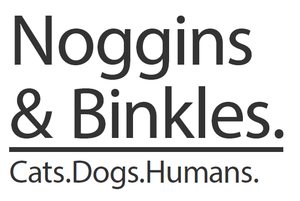When choosing a collar for your furry friend it is super important that it is safe and not just a fashion statement, after all, cats don’t actually walk on catwalks....they leave that to the humans! We love putting our beautiful collars on Noggins & Binkles, but for them, they just want something they can wear that is comfortable and isn’t going to get them in any trouble, such as getting caught and stuck on something. For that reason, we only use breakaway safety buckles on our cat collars as we believe they are the safest type of cat collars available and we are happy that both the RSPCA and Cats Protection agree! You can read more about choosing a comfortable collar for your cat in this post.
Safety breakaway buckles, or quick release buckles as they are sometimes called, will break-away from your cat’s neck if there is enough force. The force can vary depending on the breakaway buckle, the breakaway safety buckles we use will break with the force of the weight of an adult cat, so they are designed to break when your cat gets into trouble, but not to come off every five minutes, as some will with a much lower breaking weight! It is important to note that kittens will not weigh enough to break safety breakaway buckles, therefore, the buckle should always be tested on younger cats or kittens. We also recommend supervising kittens if they are wearing a collar, just in case they are not heary enough to ensure that the buckle breaks away.
So, when choosing your furry friend's next collar, these are some things to consider:
- Choose a collar with a breakaway safety buckle – avoid buckles that are not safety buckles and avoid collars with elasticated inserts, as according to Cats Protection, they are far more likely to result in cat collar accidents;
- Make sure your cat’s collar is fitted properly – you should be able to fit two fingers between the collar and your cat’s neck. This is important because if it’s too loose your cat could get their collar caught on something. You can read more about getting the right fit on your cat's collar in this post;
- Make sure any tags or bells are fitted to the collar appropriately – the Humane Society recommends cats wear ID tags (and we agree they are great for quick identification of our furry friends), but make sure any tags or bells are good quality and made of solid materials that won’t get damaged, as this could result in sharp edges. It’s also important that they are fitted well and there are no gaps in the split ring that your cat could get their claw caught in. We have written about whether you should put a bell on a cat collar in this post;
- Don't assume that collars are only for outdoor cats. We recommend a collar and personalised pet ID tag for both indoor and outdoor cats. You can read more about why in this post.
So whatever collar you choose for your furry friend, make sure you do your research and choose a safe cat collar!


